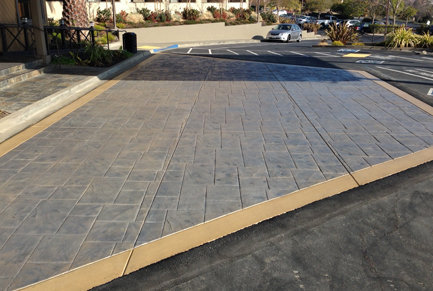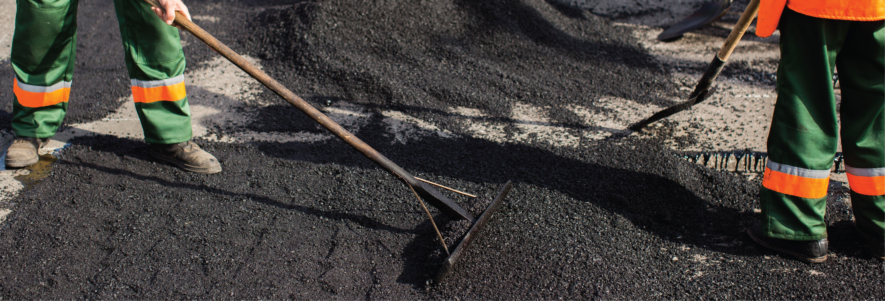How A1 Professional Asphalt & Sealing Llc can Save You Time, Stress, and Money.
How A1 Professional Asphalt & Sealing Llc can Save You Time, Stress, and Money.
Blog Article
The Greatest Guide To A1 Professional Asphalt & Sealing Llc
Table of ContentsThe Best Guide To A1 Professional Asphalt & Sealing LlcAll about A1 Professional Asphalt & Sealing LlcA1 Professional Asphalt & Sealing Llc Can Be Fun For EveryoneThe smart Trick of A1 Professional Asphalt & Sealing Llc That Nobody is DiscussingThe Best Strategy To Use For A1 Professional Asphalt & Sealing Llc

The oil in a cars and truck engine is not just oil. It has a variety of additives to improve the automobile's efficiency. These include polymers, thickness modifiers, heat stabilizers, extra lubricating substances, and put on additives. The REOB contains all the additives that remained in the waste oil along with the wear metals from the engine (generally iron and copper).
By making numerous blends making use of different REOB examples and various asphalt binders, the variants mainly can be balanced out. A number of States provided samples of recognized REOB structure to TFHRC researchers, that analyzed the examples to compare the percent of included (known) REOB to the discovered (tested) amount. The analyses showed a comparable percentage of included and discovered REOB.
How A1 Professional Asphalt & Sealing Llc can Save You Time, Stress, and Money.
None of those States recognized that the asphalt they were buying consisted of REOB. One State insisted its examples had no REOB - https://canvas.instructure.com/eportfolios/2864493/Home/A1_Professional_Asphalt_Repairs_Paving_Excellence_in_St_Louis.
Of the 1,532 examples checked, 12 percent consisted of REOB, and some had substantially high degrees of it at 1020 percent. The highest degree was 34 percent in an example from Texas, which TxDOT had used in a patching compound. This testing additionally exposed the visibility of phosphoric acid in 11 percent of the samples, and 2 percent included ground tire rubber.
2 years earlier at TRB's annual meeting, the Federal researchers held an REOB workshop and provided the findings of their laboratory analyses to a standing room-only crowd. Some companies do not specifically outlaw REOB, they do enforce physical tests that prevent its useeffectively a ban. Others do not outlaw it by spec, yet have arrangements with asphalt providers to prevent using REOB
Indicators on A1 Professional Asphalt & Sealing Llc You Need To Know
A handful do allow REOB, some within certain limits. For instance, Ohio and Texas limit degrees to less than 5 percent of the asphalt. To create a trustworthy test approach that all States can utilize, the TFHRC researchers established up a round-robin examination plan. The participants are 11 State highway firms (Illinois, Massachusetts, Minnesota, Mississippi, Montana, North Carolina, Oklahoma, South Carolina, Texas, Vermont, and Wyoming), 2 independent screening labs, the Ministry of Transportation in Ontario, Queen's College in Ontario, and an Ontario paving professional.
In overall, the scientists prepared and shipped 720 blends. The participants are checking the examples individually utilizing the guidelines supplied by the TFHRC researchers. The round-robin testing is almost finished, and TFHRC is in the process of accumulating the results. The outcome will be a suggested AASHTO test technique that any kind of State can take on and utilize (what is cold asphalt?).
The pavement with REOB, which is located 0.6 mile (1 kilometer) from the pavement without REOB, has similar subgrade, traffic thickness, and environment. The sector of Highway655 with 5 to 10 percent REOB revealed significant cracking. In this example, the presence of REOB was the recognized cause of cracking at a low temperature levels.
"In our experience in Canada, blog here even tiny amounts of 23 percent can be a trouble." Likewise, an area of test pavement in Minnesota (MN1-4) found to contain REOB likewise split prematurely. The sidewalk done well for the initial 3 to 4 years, but then started to crack. This pavement is also subject to reduced temperature levels.
Not known Details About A1 Professional Asphalt & Sealing Llc
The tests were not comprehensive, but they revealed that at levels of 6 percent or more, the tensile stamina of the asphalt dropped considerably. At a degree of 3.5 percent REOB, the variation in the physical examination approaches was higher than the effect of REOB. As a matter of fact, it was tough for scientists to examine whether REOB was existing.

One binder criterion considered is the distinction in between the low temperature critical specification temperature for stiffness (S) in the flexing beam of light rheometer and the bending beam rheometer creep incline (m-value) kept in mind as Tcritical. TC = TC (S) TC (m-value). Evaluation of this criterion is still continuous. Two independent research groups, one from AASHTO and the various other from the Asphalt Institute, concluded that more study is required on using REOB in asphalt.
Formerly, all asphalt testing measured design properties such as stiffness. These examinations do not reveal what materials had been contributed to the asphalt. One sample obtained throughout the TFHRC study had an extremely unusual analysis. The sample had the complying with examination outcomes: Superpave PG 64-28 with a heat quality of 67.3 Tcritical on the bending beam rheometer was 6.7 levels Celsius.

Some Known Questions About A1 Professional Asphalt & Sealing Llc.
These results demonstrate there are weak points in the standardized engineering screening methods that might be manipulated. The manufacturer might have an economic benefit and the item passes all the standard examinations, yet the item may not be useful to ensuring lasting efficiency. To resolve this concern and the growth of brand-new asphalt additives and extenders, TFHRC is beginning a research study program to utilize portable spectroscopic devices, x-ray fluorescence spectroscopy, and Fourier change infrared spectroscopy to enable evaluations to be performed in the field instead of needing to take examples back to the lab.
Report this page